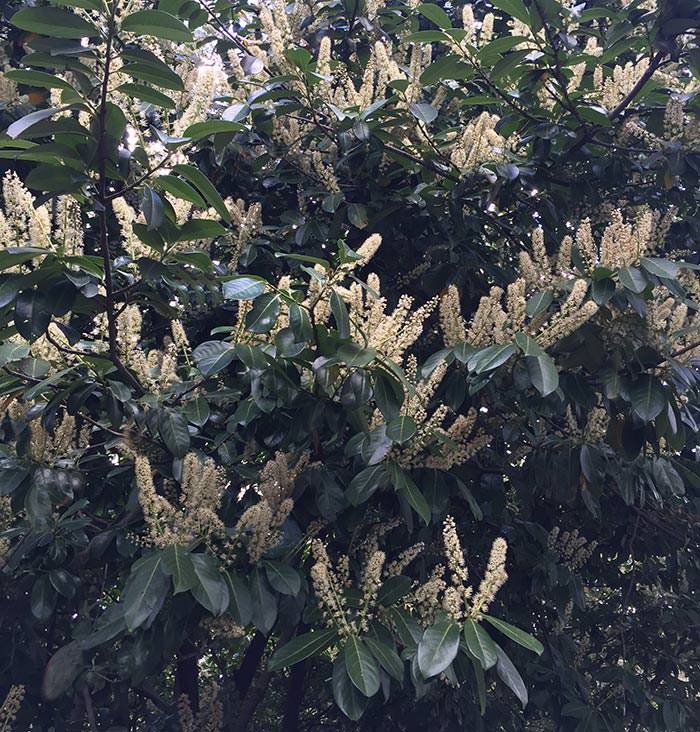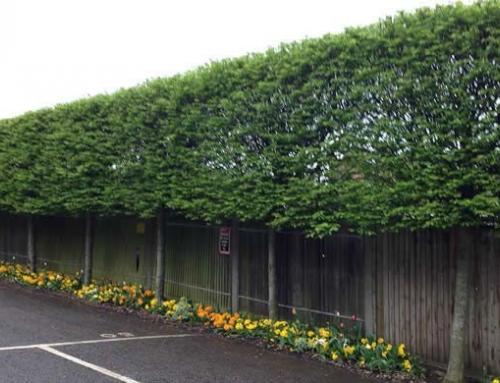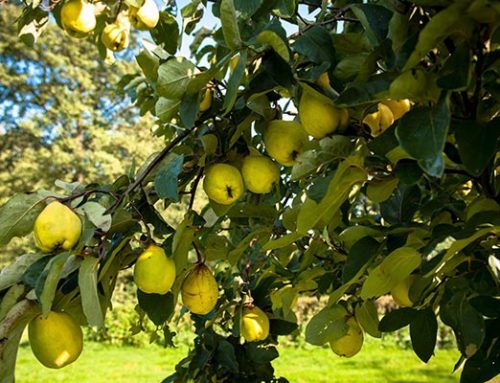Portuguese Laurel Prunus Lusitanica is an elegant contemporary hedging plant with beautiful white flowers in summer and dark green foliage which you can clip to create a dense hedge. In the autumn, this evergreen shrub or tree produces attractive berries. The fruit offers both visual interest and serve as food for birds.

Portuguese Laurel Care – Root Ball Plants
Owing to its thick, glossy foliage, Prunus Lusitanica is a popular choice for privacy screens or windbreaks. To create a hedge, privacy screen or a windbreak from the evergreen Portuguese Laurel, plant it en masse. The most cost-efficient and convenient way to do so is to buy Prunus Lusitanica root balls.
Root balled Prunus Lusitanica plants are supplied when the weather is cooler. Winter is a great time for planting root balls as the transplanting stress is minimal when temperatures are low and the roots are dormant. Root balled means that the plant is dug up straight from the ground and delivered to the customer with a properly prepared root for immediate planting as supplied without a pot. To protect the root ball, it is wrapped in a self-compostable hessian sack. While this is a cheaper and easier-to-plant alternative to potted cultivars, there are some care requirements you need to consider. The rules apply to all Portuguese Laurel cultivars: from Prunus Lusitanica Angustifolia and Myrtifolia to variegated or pleached specimens.
How to Plant Portuguese Laurel Prunus Lusitanica Root Balls
Root balled plants are budget-friendly, but they do need more care and attention. This is especially true during the first 2 years from planting. Even the planting of a root ball tree will need to be carefully executed in order to ensure your tree thrives in the new environment. We have prepared an instructional video on how to plant root balls for hedging: see below.
Storing Root Balls
Before you even get to the planting part, you will need to pay attention to how you store your root balls. If you are keeping the plants out of the ground until planting for a few days, make sure that you water the root ball to ensure it keeps moist. Just make sure not use too much force with watering. This is to prevent soil of the root ball from getting soaked and disintegrating away from the roots. The root ball should be stored out of the sun in a shady, cool spot until planting. Ideally, root ball plants will be planted immediately within a few days of arrival.
Preparing the Soil
If you are preparing to plant Prunus Lusitanica as a hedge then dig a trench approximately one third wider than the width of the root ball. The depth of the trench should be equal to the height of the root ball. The dimensions can vary with each cultivar, but, on average, the root ball is 40 cm in width and 40 cm in height.
After you have dug the trench, use the original soil you have dug up, mixed with some compost to enrich it. As a rule of thumb, a couple of shovels of compost is enough for each plant. Once you cover everything with soil, water well and soak thoroughly.
Portuguese Laurel Care After Planting
Once the root balled Prunus Lusitanica plants are in the ground, we recommend some light pruning. Trimming the top (and sides if necessary) is essential for the successful establishment of the cultivar. The next major task is to strike the right balance with watering. Portuguese Laurel is fairly demanding when it comes to optimal soil moisture, and this will be particularly apparent as the weather gets warmer. Most people will lose the plant if they fail to keep up with Prunus Lusitanica requirements as it is trying to establish a root system. Vigilance required for at least the first 2 growing seasons.
When Planting in the Summer
In case you are planting Portuguese Laurel root ball in a period from June to September and not during root ball season, you need to soak the roots before planting in the ground and water again afterward.
Portuguese Laurel Care: Common Problems
Not enough watering
As Portuguese Laurel is finicky when it comes to soil moisture, most issues that this plant can have are caused by inadequate watering. If you are checking the plant regularly and watering sufficiently there should be no problems. This is particularly important during summer– high temperatures will require you to be more vigilant about watering than usual.
Browning or Drooping Foliage
If you notice that the foliage of Prunus Lusitanica is drooping or browning, it indicates that the plant is already too dry. A quick resolution for this common problem is deep watering. This means you have to thoroughly drench the plant’s root system. To prevent this issue, keep up with the regular watering regime, especially when the weather is warm. In the summer, watering thoroughly on a weekly basis, combined with feeding, will ensure your cultivars stay healthy and in top shape. Experts recommend feeding with an all-purpose liquid feed for once a month throughout the growing season (June to September). Some slight yellowing is normal at the end of the summer if the temperatures were high, but it is unlikely.
Excessive Watering
In rare cases, overwatering can be why your Prunus Lusitanica hedging plants are not thriving. If you plant this cultivar in heavy clay or soil with poor drainage, the root system can be suffering. While this is the least likely scenario, there are methods to solve this problem if it happens. Dig up one of the plants to check the root ball for signs of water damage. If you notice any, improve soil drainage. This requires digging a larger hole and backfilling with soil/compost and maybe even using a shingle at the base.
Another important thing to note is that, during growing months, Prunus Lusitanica tends to dry out the surrounding soil. If you have any other newly planted trees around it, make sure to inspect them regularly to prevent deterioration.
Summary
If you have followed the instructions on how to plant root balled Prunus Lusitanica hedging and provided necessary care to the young cultivar, there should not be any major issues. Inadequate watering is the main problem with Prunus Lusitanica Portuguese Laurel. Lack of foliage shine, browning, drooping or yellowing all indicate that the soil is too dry and that you need to water the plants more. In general, during summer, weekly watering accompanied by feeding will keep your plants in top form.




